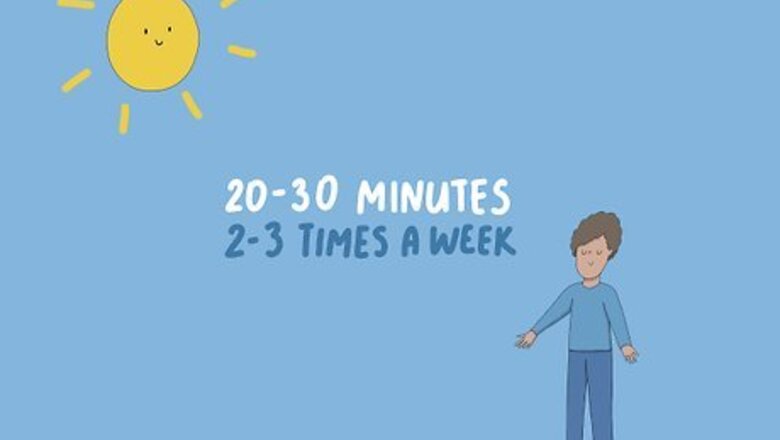
views
X
Trustworthy Source
Cleveland Clinic
Educational website from one of the world's leading hospitals
Go to source
Getting More Sun
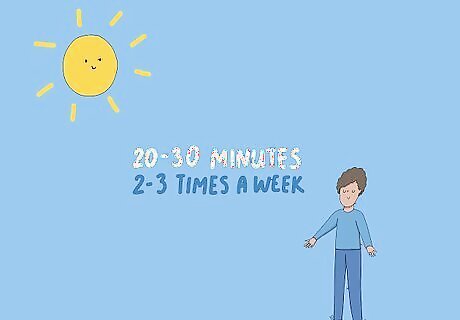
Spend 20-30 minutes in the sun at least 2-3 times a week. Since sunlight stimulates vitamin D production, you need to spend time in the sun. Let your exposed skin get access to the sun a few times a week. Most children and young adults need to spend 20-30 minutes outside 2-3 times a week. When outside, keep your arms and face exposed to get enough vitamin D. For most people, this is more than enough time in the sun for the body to produce the necessary amount of vitamin D. You can’t get vitamin D from a tanning bed or artificial light source. If you have dark skin, you’ll likely need to spend more time in the sun. You may need to go outside every day for 20-30 minutes. However, it’s best to check with your doctor to find out how much sun is right for you.
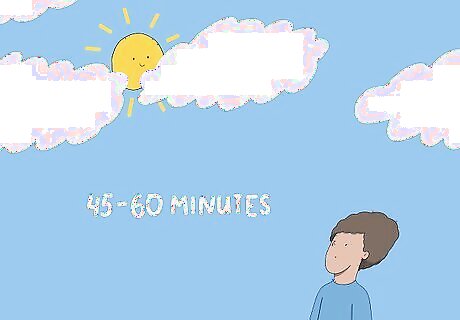
Spend more time outside on cloudy or overcast days. There are many factors that should be taken into consideration when catching some rays. If it’s overcast, you’ll get roughly 50% less sunlight. If you’re in the shade, you’ll get roughly 60% less. This means you’ll need to spend at least 45-60 minutes outside when it’s not bright out. Geographic location impacts vitamin D production as well. If you’re north or south of 40 degrees latitude (which is around Boston in the northern hemisphere and Cape Town in the southern hemisphere), it can be a lot harder to get enough vitamin D from sunlight alone during the wintertime.
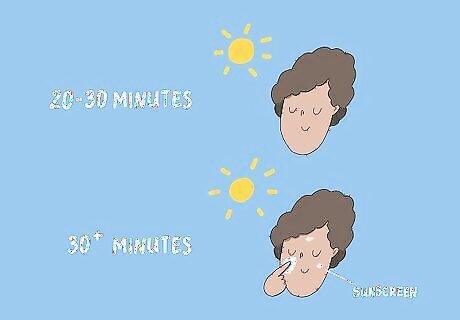
Skip the sunscreen if you’re only outside for 20-30 minutes. Sunscreen blocks UVB radiation and significantly decreases vitamin D production in your body. This means that you must leave the sunscreen at home if you only spend an hour or two outside every week. If you think you are going to spend more than 20 to 30 minutes in the sun, go ahead and throw the sunscreen on.Warning: While you need to skip the sunscreen to get vitamin D, make sure you apply it if you’re outside for longer than 30 minutes or if you go outside more often than necessary to get the proper amount of vitamin D. Excessive sun exposure can cause skin damage, skin cancer, and wrinkles.
Eating Foods with Vitamin D
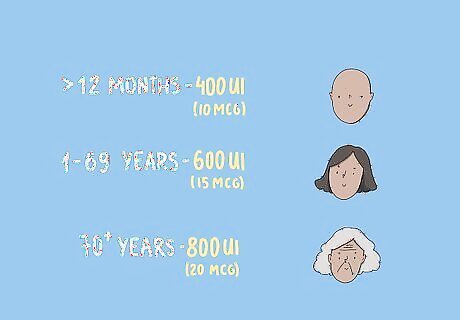
Get your vitamin D from food if you’re not getting some sun. The recommended daily amounts for vitamin D vary according to age, but they’re the same for men and women. While your body gets most of its vitamin D from the sun, you may need to eat some foods rich in vitamin D to raise your vitamin D levels if you can’t get outside. Daily Vitamin D Requirements: If you don’t get outside for at least 1 hour a week, your body needs to make up for the absence of sun. Here are the daily requirements for vitamin D (if you don’t go outside): Children younger than 12 months – 400 IU (10 mcg) People between 1-69 years of age – 600 IU (15 mcg) People aged 70 or older – 800 IU (20 mcg) Women who are pregnant or breastfeeding – 600 IU (15 mcg) It can be fairly challenging to get all of the vitamin D you need from food alone. If you go outside regularly, you probably don’t need to eat a lot of vitamin D, though.
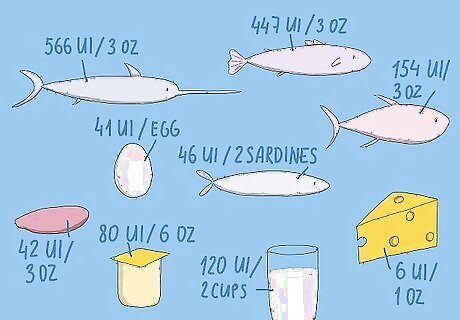
Eat foods that contain enough vitamin D to reach your daily requirement. There are relatively few foods that naturally contain vitamin D. Some foods have vitamin D added artificially, but it’s best to get the vitamin from natural sources if possible. Wild-caught swordfish – 566 IU per 3 ounces (85 g) Wild-caught salmon – 447 IU per 3 ounces (85 g) Wild-caught tuna fish – 154 IU per 3 ounces (85 g) Fortified milk – 120 IU per 2 cups (470 mL) Yogurt – 80 IU per 6 ounces (170 g) Sardines – 46 IU per 2 sardines Beef liver – 42 IU per 3 ounces (85 g) Eggs – 41 IU per egg Swiss cheese – 6 IU per 1 ounce (28 g)
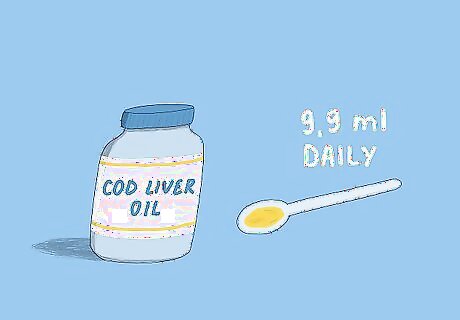
Take cod liver oil to easily reach your daily requirement. Given the limited number of foods that have vitamin D, it can be tough to get the right amount each day. The simplest way to solve this problem is to drink 2 teaspoons (9.9 mL) of cod liver oil daily. Unfortunately, this oil tastes terrible, but you can mix it into a vegetable smoothie or divide it up into smaller doses to make it easier to handle! Cod liver oil has roughly 1360 IU per 1 tablespoon (15 mL). If you consume 2 teaspoons (9.9 mL), you’ll get roughly 900 IU for the day, which is more than enough to cover the natural daily requirement. This is basically the only way to naturally reach the daily requirement without pills or any of the foods listed above.
When to Seek Medical Care
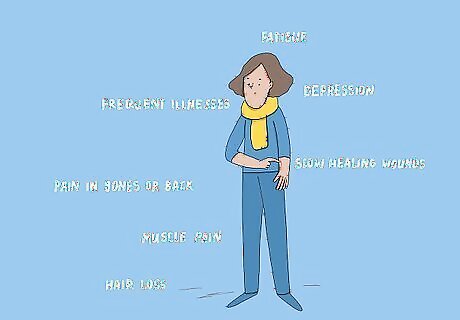
See your doctor if you have symptoms of a vitamin D deficiency. While you don’t need to worry, a vitamin D deficiency can lead to complications. Fortunately, you can reverse your symptoms by increasing your vitamin D consumption. However, you need to confirm that you have a deficiency before you can safely treat it. Visit your doctor if you develop the following symptoms: Frequent illnesses Slow healing wounds Pain in your bones or back Muscle pain Fatigue Depression Hair loss
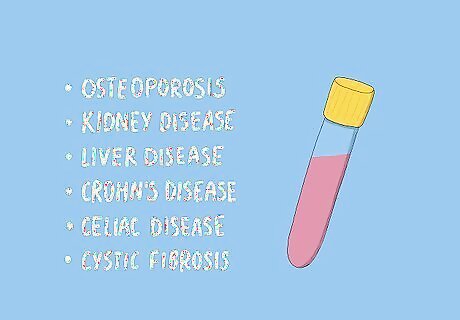
Get your vitamin D levels tested if you’re at risk for low vitamin D. Tell your doctor if you’re worried you may have a vitamin D deficiency. They may order a simple, painless blood test to check your vitamin D levels. If they’re low, your doctor can recommend dietary changes or a supplement to raise your levels. For instance, conditions like osteoporosis, kidney disease, liver disease, Crohn's disease, celiac disease, and cystic fibrosis can all contribute to low vitamin D.
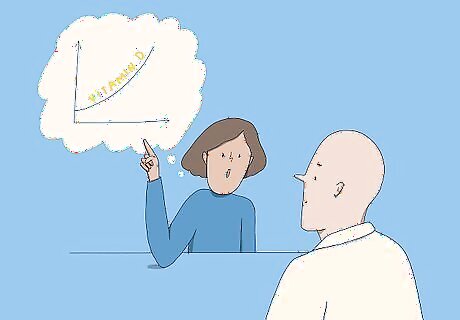
Check with your doctor before increasing your vitamin D intake. While your body needs healthy vitamin D levels, too much vitamin D can be harmful. Additionally, vitamin D from food or supplements can interfere with certain medications, including cholesterol medication and blood pressure drugs. Talk to your doctor to find out if you need more vitamin D. Then, ask if it’s safe for you to consume more vitamin D through your diet. Remind your doctor of all the medications and supplements you’re taking. Taking too much vitamin D when you get regular sun can lead to calcium buildup in your blood, bone pain, and various kidney problems. Symptoms of excess vitamin D include nausea, vomiting, and frequent urination. You usually have to consume over 60,000 IU of vitamin D a day for this to happen, though.















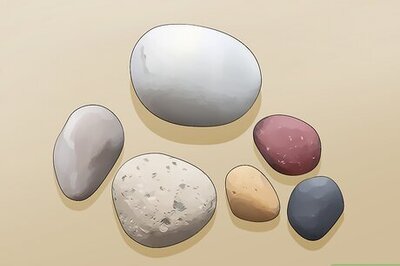
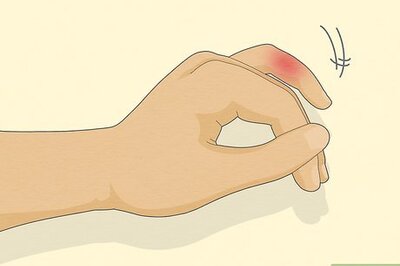
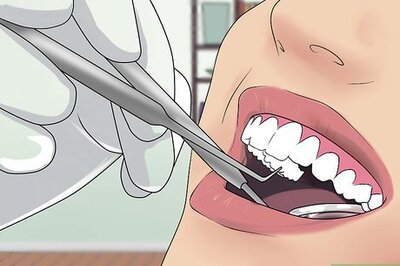


Comments
0 comment